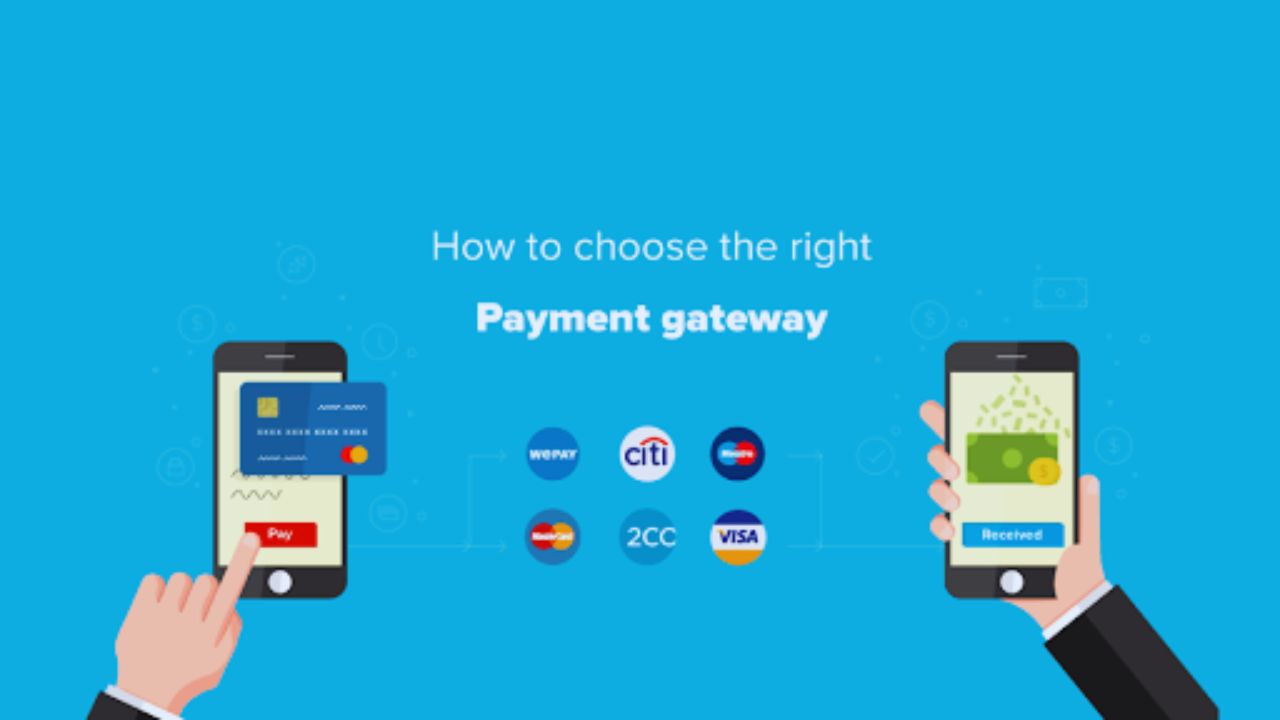In today’s hyper-connected world, social media has become the digital town square where billions gather daily to share, learn, and engage. It’s no longer just a place for casual interactions; it’s a robust ecosystem that can make or break brands, launch movements, and shape public opinion. For individuals and businesses alike, having a solid social media presence is no longer optional—it’s essential.
Imagine reaching thousands, even millions, of potential customers or followers with just a few clicks. Picture yourself as a thought leader in your industry, with your insights shared and respected globally.
Envision your brand becoming a household name, not through expensive traditional advertising, but through genuine connections fostered on social platforms. This is the potential power of a solid social media presence.
Whether you’re a small business owner looking to expand your customer base, an aspiring influencer aiming to grow your following, or a corporate brand seeking to enhance your online reputation, this comprehensive guide is your roadmap to social media success.
We’ll walk you through each crucial step, from setting clear goals to measuring your success, providing you with actionable strategies and insider tips.
Step 1: Define Your Goals and Objectives
Before you start crafting witty tweets or staging the perfect Instagram shot, it’s crucial to establish clear, measurable goals for your social media efforts. This step answers the fundamental question: “What do you want to achieve with your social media presence?”
Common social media goals include:
- Increase brand awareness: Make your brand recognizable and familiar to your target audience.
- Drive website traffic: Use social media to funnel users to your website or landing pages.
- Generate leads and sales: Convert social media followers into customers.
- Improve customer engagement: Foster more robust relationships with your audience through interactions.
- Enhance customer service: Use social platforms to address customer queries and concerns.
- Establish thought leadership: Position yourself or your brand as an authority in your industry.
When setting your goals, use the SMART criteria:
- Specific: Clearly define what you want to accomplish.
- Measurable: Ensure you can track progress with metrics.
- Achievable: Set realistic goals based on your resources and capabilities.
- Relevant: Align your social media goals with your overall business objectives.
- Time-bound: Set a specific timeframe for achieving each goal.
For example, instead of a vague goal like “increase followers,” you might aim to “gain 1,000 new Instagram followers in the next three months through daily posting and engagement strategies.”
According to a survey by Sprout Social, the top social media goals for marketers are:
- 89% use social media for brand awareness
- 77% for community engagement
- 71% for sales/lead generation
Understanding your goals will guide every subsequent decision in your social media strategy, from the platforms you choose to the content you create.
Step 2: Identify Your Target Audience
Knowing your audience is crucial for creating content that resonates and drives engagement. This step involves creating detailed profiles of your ideal followers or customers.
Consider the following aspects when defining your target audience:
1. Demographics:
- Age range
- Gender
- Location (country, city, urban/rural)
- Income level
- Education level
- Occupation
2. Psychographics:
- Interests and hobbies
- Values and beliefs
- Lifestyle choices
- Personality traits
3. Behavior:
- Online habits (preferred platforms, time spent online)
- Purchasing behavior
- Brand preferences
- Content consumption habits
4. Pain points:
- What problems or challenges do they face?
- How can your product/service/content help solve these issues?
5. Goals and aspirations:
- What are they trying to achieve?
- How does your offering align with their goals?
Use tools like Facebook Insights, Google Analytics, or survey data to gather information about your audience. Conduct market research for new brands or those looking to expand to understand your potential audience.
Create buyer personas to represent different segments of your target audience. For example:
“Sarah, 28, an urban professional interested in fitness and sustainable living. She values brands that align with her eco-friendly lifestyle and uses Instagram and TikTok for inspiration and product discovery.”
Understanding your audience profoundly allows you to tailor your content, tone, and messaging to their preferences and needs. It also helps you choose the most effective platforms to reach them.
Step 3: Choose the Right Social Media Platforms
Not all social media platforms are created equal, and not every platform suits your brand or goals. This step involves selecting the platforms that best align with your target audience and objectives.
Here’s an overview of major platforms and their key characteristics:
1. Facebook:
- Users: 2.96 billion monthly active users (2023)
- Demographics: Broad age range, slightly more prevalent among 25-34 year olds
- Best for: B2C businesses, community building, advertising
- Content types: Text, images, videos, live streams, stories
2. Instagram:
- Users: 1.47 billion monthly active users (2023)
- Demographics: Popular among 18-34-year-olds, slightly more female users
- Best for: Visual brands, influencer marketing, e-commerce
- Content types: Images, short videos (Reels), stories, IGTV
3. LinkedIn:
- Users: 900 million members (2023)
- Demographics: Professional audience, popular among 25-34 year olds
- Best for: B2B marketing, professional networking, thought leadership
- Content types: Text posts, articles, videos, job listings
4. Twitter:
- Users: 396 million monthly active users (2023)
- Demographics: Popular among 25-34 year olds, more male users
- Best for: Real-time updates, news, customer service, trending topics
- Content types: Short text posts, images, videos, polls
5. TikTok:
- Users: 1 billion monthly active users (2023)
- Demographics: Very popular among Gen Z (18-24 year olds)
- Best for: Short-form video content, viral trends, reaching younger audiences
- Content types: Short videos, live streams
6. Pinterest:
- Users: 445 million monthly active users (2023)
- Demographics: More popular among women, strong in the 50-64 age group
- Best for: Visual discovery, lifestyle brands, DIY and recipe content
- Content types: Images, infographics, product pins
When choosing platforms, consider:
- Where your target audience spends their time
- Which platforms align best with your content type and brand personality
- Your resources for creating and managing content on each platform
It’s often better to have a strong presence on a few well-chosen platforms than a weak presence across many. Start with 2-3 platforms that best fit your audience and goals, and expand as your resources and expertise grow.
Step 4: Optimize Your Profiles
Once you’ve chosen your platforms, creating or optimizing your profiles is time. A well-crafted profile is your digital storefront – it’s often the first impression potential followers or customers will have of your brand.
Here’s how to optimize your profiles across platforms:
1. Use a consistent username:
- Choose a username that’s similar or similar across all platforms.
- Make it easy to spell and remember.
- Use your brand name if possible.
2. Profile picture:
- Use a high-quality image that represents your brand.
- For personal brands, use a professional headshot.
- For businesses, use your logo or a recognizable brand image.
- Ensure each platform’s image is the right size to avoid cropping.
3. Cover image:
- Use an eye-catching image representing your brand or showcasing your products/services.
- Update cover images periodically to highlight current promotions or campaigns.
4. Bio/About section:
Write a concise, compelling description of your brand or personal mission.
- Include relevant keywords for searchability.
- Use a consistent brand voice across platforms.
- Use relevant emojis to break up text and add personality on Instagram and Twitter.
5. Contact information:
- Include your website URL.
- Add other contact methods (email, phone number) where appropriate.
- For local businesses, ensure your address and business hours are accurate.
6. Call-to-Action:
- Use platform-specific features like the Facebook CTA button or the link in your Instagram bio to drive specific actions (e.g., “Shop Now,” “Sign Up,” “Contact Us”).
7. Pinned post:
- Pour an essential post to your profile on platforms like Facebook and Twitter. This could be a welcome message, your most popular content, or information about a current promotion.
8. Complete all relevant fields:
- Fill out all applicable profile sections, including business category, products/services, and company information.
9. Verify your account:
- If eligible, apply for account verification (the blue checkmark). This adds credibility to your profile.
- Remember, your profile should be a reflection of your brand identity. Maintain consistency in visual elements and messaging across all your social media profiles to reinforce your brand image.
- Regularly audit and update your profiles to ensure all information remains current and relevant. As your brand evolves, make sure your social media profiles evolve.
Step 5: Develop a Content Strategy
A solid content strategy is the backbone of your social media presence. It defines what you’ll post, when you’ll post it, and how it aligns with your overall goals. Here’s how to develop an effective content strategy:
1. Define your brand voice and tone:
- Establish guidelines for how your brand should sound on social media.
- Is your tone formal or casual? Serious or humorous? Inspirational or informative?
- Ensure this voice is consistent across all content and platforms.
2. Create a content calendar:
- Plan your content, typically monthly or quarterly.
- Include critical dates, product launches, holidays, and industry events.
- Organize your calendar with Trello, Asana, or specialized social media management platforms.
3. Mix different types of content:
- Text posts: Quotes, tips, questions to engage your audience
- Images: Product photos, infographics, behind-the-scenes shots
- Videos: How-to guides, product demonstrations, customer testimonials
- Live streams: Q&A sessions, product launches, behind-the-scenes events
- User-generated content: Reshare content created by your customers or followers
- Curated content: Share relevant content from other sources (with credit)
4. Follow the 80/20 rule:
- 80% of your content should be valuable, non-promotional content that educates, entertains, or engages your audience.
- 20% can be directly promoted with your products or services.
5. Use storytelling:
- Craft narratives around your brand, products, or customers.
- Share your brand’s origin story, employee spotlights, or customer success stories.
- Use storytelling techniques to make your content more engaging and memorable.
6. Incorporate user-generated content (UGC):
- Encourage followers to create and share content related to your brand.
- Repost UGC (with permission) to build community and showcase real users.
- Run UGC contests to increase engagement and gather authentic content.
7. Create content pillars:
- Identify 3-5 main themes or topics that align with your brand and audience interests.
- Ensure each piece of content fits into one of these pillars.
8. Optimize for each platform:
- Tailor your content to suit each platform’s unique features and audience expectations.
- For example, use hashtags on Instagram and Twitter, but use them sparingly on Facebook.
9. Plan for trending topics and real-time marketing:
- Leave room in your calendar for timely, trend-based content.
- Be prepared to adjust your content plan in response to current events or trending topics.
10. Develop a content repurposing strategy:
- Find ways to repurpose successful content across different platforms.
- For example, turn a popular blog post into a series of social media graphics or videos.
According to the Content Marketing Institute, 91% of B2B marketers use social media content as part of their strategy. A well-planned content strategy ensures that every post serves a purpose and moves you closer to your social media goals.
Remember, your content strategy should be flexible. Regularly analyze your performance metrics and be prepared to adjust your plan based on what resonates best with your audience.
Step 6: Create Engaging Content
With your content strategy in place, it’s time to create content that captures attention and drives engagement. Here are fundamental principles and ideas for creating engaging social media content:
1. Use eye-catching visuals:
- High-quality images and videos are crucial for stopping the scroll.
- Use tools like Canva or Adobe Spark to create professional-looking graphics.
- Experiment with different visual formats: photos, illustrations, infographics, GIFs, etc.
- Maintain a consistent visual style that aligns with your brand identity.
2. Keep the text concise and easy to read:
- Social media users typically skim content, so make your message clear and concise.
- Break up text with short paragraphs, bullet points, and emojis.
- Front-load your content with the most essential information.
3. Ask questions to encourage engagement:
- Use open-ended questions to spark conversations.
- Create polls or quizzes to encourage interaction.
- Ask for opinions or advice to make followers feel valued.
4. Share behind-the-scenes content:
- Give followers a peek into your processes, office life, or event preparations.
- Introduce team members to add a human element to your brand.
- Share “day in the life” content to build a connection with your audience.
5. Showcase customer testimonials and success stories:
- Share positive reviews and feedback from satisfied customers.
- Create case studies highlighting how your product or service solved a problem.
- Use customer stories to demonstrate the real-world impact of your brand.
6. Create how-to guides and tutorials:
- Provide value by teaching your audience something new.
- Use step-by-step guides, video tutorials, or infographics to explain processes.
- Address common questions or pain points your audience faces.
7. Share industry news and insights:
- Position yourself as a thought leader by commenting on industry trends.
- Curate and share relevant news articles with your take on the topic.
- Offer predictions or analysis on future trends in your field.
8. Use humor (when appropriate):
- Funny or lighthearted content can be highly shareable.
- Ensure humor aligns with your brand voice and is appropriate for your audience.
- Be mindful of cultural sensitivities and avoid controversial topics.
9. Leverage user-generated content:
- Encourage customers to share photos or videos using your product.
- Create a branded hashtag for followers to use when sharing related content.
- Feature UGC regularly to foster community and showcase real users.
10. Create themed series or recurring content:
- Develop regular features like “Tip Tuesday” or “Feature Friday” to create consistency.
- Use themed content to build anticipation and encourage repeat engagement.
11. Utilize platform-specific features:
- Take advantage of features like Instagram Stories, Twitter Polls, or Facebook Live.
- Stay up-to-date with new features and experiment with them early.
12. Incorporate trending topics or challenges:
- Participate in relevant trending hashtags or social media challenges.
- Create your own branded challenges to encourage participation and virality.
13. Use data and statistics:
- Share interesting facts or statistics relevant to your industry.
- Create infographics to present data in a visually appealing way.
14. Offer exclusive content or promotions:
- Provide followers with content or offers they can’t get elsewhere.
- Use social media to announce new products or services first.
Remember, understanding what resonates with your audience is critical to engaging content. Regularly analyze your post performance and adjust your content strategy based on what works best.
HubSpot reports that video is the most popular content format on social media, with 68% of consumers preferring to learn about new products or services through short videos. Consider incorporating more video content into your strategy, whether short-form videos like TikToks and Reels or longer-form content on YouTube or IGTV.
Step 7: Establish a Posting Schedule
Consistency is critical to building a solid social media presence. A well-planned posting schedule helps you maintain a regular presence, which is crucial for engaging your audience and growing your following. Here’s how to establish an effective posting schedule:
1. Determine the best times to post for each platform:
- Optimal posting times vary by platform and audience.
- Use platform analytics to see when your followers are most active.
- Generally, weekdays during business hours are adequate for B2B content, while evenings and weekends often work well for B2C.
- Sprout Social’s data suggests that the best times to post on Facebook are Tuesday, Wednesday, and Friday from 9 a.m. to 1 p.m.
2. Use social media management tools:
- Tools like Hootsuite, Buffer, or Later allow you to schedule posts in advance.
- These tools often provide analytics to help you optimize your posting times.
- Some offer features like content calendars and team collaboration tools.
3. Maintain a consistent posting frequency:
- Decide how often you’ll post on each platform.
- As a general guide:
- Facebook: 1-2 times per day
- Instagram: 1-3 times per day
- Twitter: 3-5 times per day
- LinkedIn: 1-2 times per day
- Pinterest: 5-10 times per day
- Quality is more important than quantity. It’s better to post less frequently with high-quality content than to post low-quality content more often.
4. Plan content:
- Create a content calendar for at least a month in advance.
- This allows you to align your content with upcoming events, holidays, or campaigns.
- Leave room for real-time, topical content as well.
5. Vary your content types:
- Mix up the types of content you post (e.g., images, videos, text posts, polls) to keep your feed interesting.
- Consider creating themed days, like “Motivational Monday” or “Behind-the-Scenes Thursday.”
6. Schedule time for real-time engagement:
- While scheduling posts is efficient, also allocate time for live engagement.
- Respond to comments, participate in conversations, and share timely content.
7. Use platform-specific features:
- Add features like Instagram Stories, Facebook Live, or Twitter Spaces to your schedule.
- These time-sensitive features can boost engagement and visibility.
8. Consider time zones:
- Schedule posts that can reach different audience segments if your audience spans multiple time zones.
- You should post the same content simultaneously to maximize reach.
9. Monitor and adjust:
- Regularly review your analytics to see which posts perform best and at what times.
- Be prepared to adjust your schedule based on this data.
- Social media algorithms and user behaviors change, so what works now might not work in six months.
10. Balance evergreen and timely content:
- Schedule evergreen content (content that remains relevant over time) in advance.
- Leave flexibility in your schedule for timely or trending content.
11. Consider seasonal trends:
- Adjust your posting schedule to account for seasonal changes in user behavior.
- For example, summer months might decrease engagement during typical work hours.
12. Test and iterate:
- Experiment with different posting times and frequencies.
- Use A/B testing to compare the performance of similar posts at different times.
Remember, the “perfect” posting schedule will be unique to your brand and audience. What works for one business may not work for another. The key is to start with best practices and refine your approach based on your specific results and audience engagement.
Establishing a well-planned posting schedule ensures that your social media presence remains active and engaging, helping you build stronger connections with your audience and achieve your social media goals.
Step 8: Engage with Your Audience
Social media is not a one-way street. Engaging with your audience is crucial for building relationships, fostering loyalty, and increasing reach. Here’s how to effectively engage with your audience:
1. Respond promptly to comments and messages:
- Aim to respond within a few hours.
- A study by Sprout Social found that 40% of consumers expect brands to respond within the first hour of reaching out on social media.
- Use a conversational, friendly tone in your responses.
2. Like and share user-generated content:
- Acknowledge when users mention or tag your brand.
- Share user-generated content (with permission) to showcase your community.
- This encourages more users to create content featuring your brand.
3. Run polls and surveys:
- Use platform features like Instagram Stories or Twitter polls to gather feedback.
- Ask for opinions on new products, content ideas, or general preferences.
- This not only boosts engagement but also provides valuable insights.
4. Host Q&A sessions or live streams:
- Use features like Instagram Live or Facebook Live to connect directly with your audience.
- Answer questions in real-time to build trust and showcase expertise.
- Live streams can significantly boost engagement and reach.
5. Join relevant conversations and hashtags:
- Participate in industry-specific chats or trending topics.
- Use relevant hashtags to increase the visibility of your posts.
- Contribute valuable insights to establish thought leadership.
6. Collaborate with influencers or other brands:
- Partner with influencers or complementary brands for cross-promotion.
- This can help you reach new audiences and add credibility to your brand.
- Ensure collaborations align with your brand values and target audience.
7. Create and nurture a community:
- Start a Facebook Group or use community features on other platforms.
- Encourage discussions and user-to-user interactions.
- Regularly contribute to keep the community active and valuable.
8. Personalize your interactions:
- Address users by name when responding to comments or messages.
- Reference previous interactions to show you value the relationship.
- Tailor your responses to each individual rather than using generic replies.
9. Show appreciation:
- Thank users for positive feedback or for sharing your content.
- Recognize loyal followers or customers with shout-outs or exclusive offers.
- Celebrate milestones (like follower counts) with your community.
10. Handle negative feedback professionally:
- Respond to negative comments or reviews promptly and professionally.
- Take the conversation to private messages for more complex issues.
- Use negative feedback as an opportunity to showcase your customer service.
11. Encourage and incentivize engagement:
- Run contests or giveaways that require user participation.
- Offer exclusive discounts or early access to followers who engage regularly.
- Create content that naturally encourages responses, like asking for opinions or advice.
12. Use social listening tools:
- Monitor mentions of your brand across social media, even when you’re not directly tagged.
- Engage with relevant conversations to increase your brand’s visibility.
- Tools like Mention or Brandwatch can help with this.
13. Provide value beyond your products/services:
- Share helpful tips, industry insights, or entertaining content.
- Position your brand as a valuable resource, not just a business trying to sell.
14. Be human:
- Show the people behind your brand through employee spotlights or behind-the-scenes content.
- Use a conversational tone that matches your brand voice.
- Don’t be afraid to show personality and humor when appropriate.
Remember, engagement is about building relationships. It’s about increasing numbers and creating meaningful interactions that foster loyalty and trust. Consistent, authentic engagement can turn followers into brand advocates, significantly amplifying your social media impact.
Step 9: Use Hashtags Strategically
Hashtags can significantly increase your content’s visibility and reach, helping you connect with users interested in specific topics. Here’s how to use hashtags effectively:
1. Research popular and relevant hashtags:
- Use tools like Hashtagify or RiteTag to find popular hashtags in your industry.
- Look at what hashtags your competitors and industry leaders are using.
- Check trending hashtags that might be relevant to your content.
2. Create branded hashtags:
- Develop unique hashtags for your brand, campaigns, or events.
- Keep them short, memorable, and easy to spell.
- Promote your branded hashtags across all marketing channels.
3. Use a mix of broad and niche hashtags:
- Broad hashtags (e.g., #fitness) have an extensive reach but high competition.
- Niche hashtags (e.g., #yogaforbeginners) have a smaller but more targeted audience.
- Use a combination to balance reach and relevance.
4. Avoid overusing hashtags:
- Instagram: Use 5-9 hashtags for optimal engagement.
- Twitter: 1-2 hashtags per tweet is ideal.
- Facebook and LinkedIn: 1-3 hashtags work best.
- Using too many hashtags can look spammy and reduce engagement.
5. Place hashtags strategically:
- On Instagram, you can place hashtags in the caption or as a comment on your post.
- On Twitter, integrate hashtags naturally into your tweet text.
- On LinkedIn, add hashtags at the end of your post.
6. Participate in trending hashtags:
- Join conversations around trending topics that are relevant to your brand.
- Be cautious and research the context of a trending hashtag before using it.
7. Use location-based hashtags:
- Include hashtags for your city or region to reach local audiences.
- This is especially useful for local businesses or events.
8. Create hashtag sets:
- Group relevant hashtags together for different types of content.
- Save these sets to use consistently across similar posts.
9. Monitor hashtag performance:
- Use platform analytics to see which hashtags drive the most engagement.
- Regularly update your hashtag strategy based on this data.
10. Consider hashtag holidays:
- There are hashtag holidays for almost everything (e.g., #NationalCoffeeDay).
- Participate in relevant hashtag holidays to boost visibility and engagement.
11. Use industry-specific hashtags:
- Identify and use hashtags that are popular within your specific industry.
- This helps you reach users who are likely interested in your content.
12. Create campaign-specific hashtags:
- For marketing campaigns or events, create unique hashtags to track engagement.
- Encourage participants to use these hashtags to increase visibility.
TrackMaven found that Instagram posts with nine hashtags receive the most engagement. However, the optimal number can vary based on your industry and audience, so testing and seeing what works best for your brand is essential.
Remember, while hashtags are powerful tools, they should be used thoughtfully and in moderation. The key is to find the right balance that increases your visibility without overwhelming your content or appearing spammy.
Step 10: Leverage Paid Advertising
While organic reach is significant, paid advertising can boost your social media presence, helping you reach a larger, more targeted audience. Here’s how to effectively use paid advertising on social media:
1. Set a budget for social media advertising:
- Start small and gradually increase your budget as you learn what works.
- Consider allocating 5-10% of your revenue to marketing, with a portion dedicated to social media ads.
2. Choose the right platforms for your ads:
- Select platforms based on where your target audience is most active.
- Different platforms are better for different goals (e.g., Facebook for brand awareness, Instagram for visual products, LinkedIn for B2B).
3. Define your target audience for each campaign:
- Use platform targeting options to reach specific demographics, interests, and behaviors.
- Create custom audiences based on your existing customer data.
- Use lookalike audiences to reach new users who are similar to your best customers.
4. Create compelling ad copy and visuals:
- Use clear, concise copy that highlights the value proposition.
- Include high-quality images or videos that grab attention.
- Ensure your ad creative aligns with your brand identity.
5. Test different ad formats:
- Experiment with various formats like image ads, video ads, carousel ads, and story ads.
- A/B tests different elements (headlines, images, call-to-actions) to optimize performance.
6. Set clear campaign objectives:
- Define your goal (e.g., brand awareness, website traffic, lead generation).
- Choose the appropriate campaign objective on the ad platform.
7. Use retargeting:
- Set up retargeting campaigns to reach users who have interacted with your website or social media profiles.
- These warm leads are often more likely to convert.
8. Monitor and optimize your campaigns regularly:
- Keep a close eye on your ad performance metrics.
- Adjust your targeting, creative, or budget based on the results.
- Don’t be afraid to pause underperforming ads and reallocate the budget to top performers.
9. Implement conversion tracking:
- Set up pixel tracking on your website to measure the effectiveness of your ads.
- This allows you to track user actions after clicking on your ad.
10. Create a sales funnel:
- Use different ad types to guide users through the customer journey.
- For example, use brand awareness ads to introduce your brand, then retarget with product-specific ads.
11. Utilize platform-specific ad features:
- Each platform offers unique ad features. For example:
- Facebook’s Custom Audiences
- Instagram’s Shopping ads
- LinkedIn’s Sponsored InMail
- Experiment with these features to find what works best for your brand.
12. Maintain consistency between organic and paid content:
- Ensure your ad content aligns with your organic social media presence.
- This creates a cohesive brand experience for users.
13. Consider influencer partnerships:
- Collaborate with influencers to create sponsored content.
- This can be more authentic and engaging than traditional ads.
14. Use seasonal and time-sensitive offers:
- Create ads around holidays, events, or limited-time promotions.
- This creates a sense of urgency and can drive quick conversions.
According to eMarketer, social media ad spending in the US is expected to reach $78.31 billion in 2023, highlighting the growing importance of paid social in marketing strategies.
Remember, successful paid advertising requires ongoing testing and optimization. What works today may not work tomorrow, so stay agile and be prepared to adapt your strategy based on performance data and changing market conditions.
Step 11: Collaborate and Network.
Building relationships within your industry and with your audience can significantly expand your reach and credibility. Here’s how to effectively collaborate and network on social media:
1. Engage with industry influencers and thought leaders:
- Follow and interact with key figures in your industry.
- Share and comment on their content to build rapport.
- Reach out for potential collaborations or interviews.
2. Participate in online communities and groups:
- Join relevant Facebook Groups, LinkedIn Groups, or Reddit communities.
- Contribute valuable insights and engage in discussions.
- Share your expertise without being overly promotional.
3. Attend virtual events and Twitter chats:
- Participate in industry webinars, online conferences, and Twitter chats.
- Use event hashtags to join conversations and increase visibility.
- Network with other attendees and speakers.
4. Guest post on other blogs or podcasts:
- Offer to write guest posts for industry blogs or appear on podcasts.
- This exposes you to new audiences and builds your authority.
- Reciprocate by featuring others on your platforms.
5. Cross-promote with complementary brands:
- Partner with non-competing brands that share your target audience.
- Collaborate on joint campaigns, giveaways, or content.
- Share each other’s content to reach new followers.
6. Leverage employee advocacy:
- Encourage employees to share company content on their profiles.
- Provide guidelines and make it easy for them to share approved content.
- This can significantly expand your organic reach.
7. Participate in or host Twitter chats:
- Join relevant Twitter chats in your industry.
- Consider hosting your chat to establish thought leadership.
8. Collaborate with micro-influencers:
- Partner with micro-influencers who have highly engaged audiences.
- These collaborations can often be more authentic and cost-effective than macro-influencer partnerships.
9. Create and share user-generated content:
- Encourage customers to create content featuring your products or services.
- Share this content (with permission) to build community and social proof.
10. Offer expert quotes or interviews:
- Reach out to industry publications offering expert commentary.
- This can lead to valuable backlinks and increased credibility.
11. Join professional associations:
- Become a member of relevant industry associations.
- Participate in their online forums and events.
12. Create a brand ambassador program:
- Identify and nurture relationships with your most loyal customers or followers.
- Provide them with exclusive content, early product access, or special discounts.
- Encourage them to share their experiences with your brand on social media.
- Consider offering incentives for successful referrals or high-quality content creation.
13. Collaborate on content creation:
- Partner with other brands or influencers to co-create content like videos, webinars, or e-books.
- This allows you to pool resources and reach each other’s audiences.
14. Participate in industry challenges or events:
- Take part in or initiate industry-wide challenges or events on social media.
- This can increase visibility and create networking opportunities.
15. Offer mentorship or seek mentorship:
- Share your expertise by offering mentorship to newcomers in your industry.
- If you’re new, seek mentorship from established figures in your field.
16. Engage in social listening:
- Monitor conversations about your industry on social media.
- Join relevant discussions to showcase your expertise and build connections.
17. Host virtual meetups or networking events:
- Organize online events for your industry or niche.
- This positions you as a connector and valuable community member.
18. Collaborate on charitable initiatives:
- Partner with non-profit organizations or other brands for social good campaigns.
- This can enhance your brand image and create meaningful connections.
19. Create a referral program:
- Encourage your network to refer new clients or customers.
- Offer incentives for successful referrals to motivate participation.
20. Leverage LinkedIn’s professional network:
- Actively engage on LinkedIn by sharing industry insights and joining professional groups.
- Use LinkedIn’s publishing platform to share long-form content and establish thought leadership.
- Remember, successful collaboration is about creating mutual value. Always approach potential partnerships with a clear idea of how both parties can benefit. Building a solid network takes time and consistent effort, but the long-term benefits of expanded reach, increased credibility, and new opportunities can be substantial.
Step 12: Monitor and Analyze Your Performance
Regularly tracking and analyzing your social media performance is crucial for refining your strategy and achieving your goals. Here’s how to effectively monitor and analyze your social media efforts:
1. Use built-in analytics tools:
- Familiarize yourself with the native analytics tools each social media platform provides.
- Facebook Insights, Instagram Insights, Twitter Analytics, and LinkedIn Analytics offer valuable data about your audience and content performance.
2. Set up Google Analytics:
- Use Google Analytics to track social media traffic to your website.
- Set up goals to measure conversions from social media channels.
3. Monitor critical metrics:
- Engagement rate: Likes, comments, shares, and clicks divided by total followers.
- Reach: The number of unique users who saw your content.
- Impressions: Total number of times your content was displayed.
- Click-through rate (CTR): The percentage of people who clicked on a link in your post.
- Conversion rate: The percentage of visitors who took a desired action (e.g., signed up, made a purchase).
4. Track follower growth:
- Monitor the rate at which you gain (or lose) followers.
- Analyze which content or campaigns correlate with follower growth spikes.
5. Analyze post-performance:
- Identify which posts perform best in terms of engagement and reach.
- Look for patterns in high-performing content (e.g., posting time, content type, topics).
6. Measure return on investment (ROI):
- For paid campaigns, calculate the ROI by comparing the cost of your efforts to the results achieved.
- Consider monetary returns (e.g., sales) and non-monetary benefits (e.g., brand awareness).
7. Use social media management tools:
- Tools like Hootsuite, Sprout Social, or Buffer offer comprehensive analytics across multiple platforms.
- These tools can save time and provide more in-depth insights.
8. Conduct regular content audits:
- Periodically review all your social media content to identify top performers and underperforming posts.
- Use these insights to inform your content strategy going forward.
9. Monitor competitor performance:
- Keep an eye on your competitors’ social media activities.
- Tools like Socialbakers or Rival IQ can help with competitive analysis.
10. Set up custom reports:
- Create reports that focus on the metrics most relevant to your goals.
- Schedule regular (weekly or monthly) performance reviews.
11. A/B test different elements:
- Experiment with different posting times, content types, or ad creatives.
- Use the results to optimize your strategy.
12. Track customer sentiment:
- Monitor comments and mentions to gauge overall sentiment towards your brand.
- Tools like Mention or Brandwatch can help with sentiment analysis.
13. Align metrics with business objectives:
- Ensure the metrics you track directly to your overall business goals.
- For example, if your goal is lead generation, focus on metrics like click-through rates and form completions.
14. Use UTM parameters:
- Add UTM parameters to your social media links to track which platforms and posts drive the most traffic and conversions.
15. Monitor hashtag performance:
- Track the performance of your branded hashtags and campaign-specific hashtags.
- Analyze which hashtags are driving the most engagement and reach.
Remember, monitoring and analysis aim to collect data and gain actionable insights. Regularly reviewing your performance allows you to identify what’s working, what’s not, and where there are opportunities for improvement. Use these insights to refine your social media strategy and tactics continually.
Step 13: Stay Up-to-Date with Trends
The social media landscape constantly evolves, with new features, platforms, and trends emerging regularly. Staying current is crucial for maintaining an effective social media presence. Here’s how to keep up with the latest trends:
1. Follow social media news sources and blogs:
- Subscribe to industry-leading blogs like Social Media Examiner, Sprout Social, and Hootsuite’s blog.
- Follow social media experts and influencers on platforms like Twitter and LinkedIn.
2. Experiment with new platform features:
- Be an early adopter of new features introduced by social media platforms.
- Try it out quickly when Instagram introduces a new post or story feature.
3. Attend webinars and conferences:
- Participate in online webinars about social media marketing.
- Attend industry conferences (virtual or in-person) to learn from experts and network with peers.
4. Join professional groups:
- Become a member of social media marketing groups on platforms like Facebook and LinkedIn.
- Engage in discussions and share experiences with other professionals.
5. Subscribe to industry newsletters:
- Sign up for email newsletters from reputable social media marketing resources.
- These often provide curated content about the latest trends and best practices.
6. Use social listening tools:
- Utilize tools like Brandwatch or Sprout Social to monitor conversations and trends in your industry.
7. Engage with your audience:
- Notice how your audience’s behavior and preferences change over time.
- Conduct surveys or polls to gather feedback about their social media habits.
8. Monitor competitor activities:
- Keep an eye on what your competitors are doing on social media.
- Look for new strategies or content types they’re experimenting with.
9. Explore emerging platforms:
- Stay aware of new social media platforms that are gaining popularity.
- Be prepared to establish a presence on new platforms if they align with your audience and goals.
10. Leverage platform insights:
- Regularly check the insights and analytics provided by social media platforms.
- These often highlight new features or trends that are performing well.
11. Participate in beta programs:
- Sign up for beta testing programs social media platforms offer when available.
- This gives you early access to new features and the opportunity to provide feedback.
12. Follow hashtags related to social media marketing:
- Use hashtags like #SMM (Social Media Marketing) or #DigitalMarketing to discover new content and discussions.
13. Engage in continuous learning:
- Take online courses or certifications in social media marketing.
- Platforms like Coursera, Udemy, and LinkedIn Learning offer up-to-date courses.
14. Read case studies:
- Study successful social media campaigns from various industries.
- Analyze what made them effective and how to apply those lessons to your strategy.
15. Adapt to cultural and societal shifts:
- Be aware of broader cultural trends and how they impact social media usage.
- Adjust your strategy to align with changing societal values and expectations.
Remember, while it’s important to stay current, not every trend will suit your brand. Evaluate new trends in the context of your overall strategy and audience preferences. The goal is to be informed and adaptable, not to chase every new emerging trend.
By staying up-to-date, you can ensure your social media strategy remains relevant and effective in an ever-changing digital landscape.
Step 14: Maintain Brand Consistency
Consistency in your social media presence is crucial to brand recognition and trust. Here’s how to maintain brand consistency across your social media channels:
1. Use consistent colors, fonts, and imagery:
- Develop a visual style guide for your social media content.
- Use your brand colors consistently in graphics and images.
- Stick to a set of fonts that align with your brand identity.
2. Maintain a cohesive brand voice and messaging:
- Define your brand’s tone of voice (e.g., professional, friendly, humorous).
- Ensure all team members understand and can replicate this voice.
- Keep core messages consistent across all platforms.
3. Create branded templates for regular content series:
- Design templates for recurring content types (e.g., quote graphics, product features).
- This ensures visual consistency and saves time when creating content.
4. Develop social media guidelines for your team:
- Create a document outlining best practices for posting on behalf of your brand.
- Include guidelines on language use, image selection, and response protocols.
5. Ensure all content reflects your brand values and mission:
- Every post should align with your brand’s core values and mission.
- Avoid content that could contradict or dilute your brand message.
6. Use consistent profile and cover images:
- Use the same profile picture (usually your logo) across all platforms.
- Ensure cover images are consistent in style, even if not identical.
7. Maintain a consistent posting schedule:
- Develop a content calendar to ensure regular, consistent posting.
- This helps set expectations for your audience and builds habit-forming engagement.
8. Cross-promote content consistently:
- When sharing the same content across platforms, maintain consistent messaging.
- Adapt the format for each platform while keeping the core message the same.
9. Use consistent hashtags:
- Develop a set of branded hashtags and use them consistently.
- This helps in brand recognition and makes your content more discoverable.
10. Align social media with other marketing channels:
- Ensure your social media presence aligns with your website, email marketing, and other channels.
- Create a seamless brand experience across all touchpoints.
11. Be consistent in customer interactions:
- Develop standard responses for common questions or situations.
- Ensure all team members handling social media interactions are trained in your brand voice and policies.
12. Use consistent naming conventions:
- Use the same or similar usernames across all platforms when possible.
- This makes it easier for your audience to find and recognize you across different channels.
13. Maintain quality standards:
- Set guidelines for the quality of images, videos, and written content.
- Consistently high-quality content reinforces your brand’s professionalism.
14. Create a consistent theme for your social media aesthetic:
- Develop a visual theme that reflects your brand identity.
- This could involve consistent color schemes, filters, or types of imagery.
15. Regularly audit your social media presence:
- Periodically review all your social media accounts to ensure they align with your current brand guidelines.
- Update any outdated information or visuals.
Consistent branding across social media channels can increase revenue by up to 23%, according to a study by Lucidpress. This underscores the importance of maintaining a cohesive brand identity in social media efforts.
Step 15: Provide Value and Build Trust
The ultimate goal of your social media presence should be to provide value to your audience and build trust in your brand. Here’s how to achieve this:
1. Share valuable, educational content:
- Create and curate content that helps solve your audience’s problems. Offer tips, how-to guides, and industry insights.
- Focus on quality over quantity in your content creation.
2. Be transparent and authentic in your communications:
- Be honest about your products, services, and company practices.
- If you make a mistake, own up to it publicly and explain how you’re addressing it.
- Share behind-the-scenes content to give followers a genuine look at your brand.
3. Address customer concerns and feedback openly:
- Respond to both positive and negative feedback promptly and professionally.
- Use public complaints as an opportunity to showcase your customer service.
- Implement changes based on customer feedback and communicate these improvements.
4. Showcase your company culture and values:
- Share content that reflects your company’s mission and values.
- Highlight employee stories and perspectives.
- Demonstrate how your values guide your business decisions.
5. Highlight your social responsibility initiatives:
- Share information about your company’s charitable work or sustainability efforts.
- Encourage follower participation in social causes you support.
- Be genuine in your approach to avoid appearing exploitative.
6. Provide excellent customer service:
- Use social media as a customer service channel.
- Respond quickly and helpfully to customer inquiries.
- Go above and beyond to resolve issues when possible.
7. Create and share user-generated content:
- Encourage customers to share their experiences with your products or services.
- Feature this content on your social media channels (with permission).
- This builds trust by showing real customer experiences.
8. Offer exclusive value to your social media followers:
- Provide special discounts or early access to new products for your social media community.
- Share insider information or sneak peeks to make followers feel valued.
9. Be consistent and reliable:
- Maintain a regular posting schedule.
- Deliver on any promises made through social media.
- Be a consistent source of valuable information in your industry.
10. Show the human side of your brand:
- Introduce team members and share their stories.
- Use a conversational, relatable tone in your communications.
- Share moments of celebration or challenges to create emotional connections.
11. Engage in meaningful conversations:
- Don’t just broadcast messages; engage in two-way communication with your audience.
- Ask questions, run polls, and encourage discussions.
- Actively listen to your audience’s feedback and opinions.
12. Provide social proof:
- Share customer testimonials and success stories.
- Highlight positive reviews and ratings.
- Showcase any awards or recognition your brand has received.
13. Be a thought leader in your industry:
- Share original research or insights.
- Offer expert commentary on industry trends and news.
- Participate in or host industry events and share the knowledge gained.
14. Respect your audience’s privacy:
- Be transparent about how you use customer data.
- Don’t share private information without permission.
- Adhere to all relevant data protection regulations.
15. Create long-form, in-depth content:
Social media often favors short-form content, but occasional, more comprehensive pieces can provide significant value.
- Use features like LinkedIn articles or Facebook Notes for longer content.
Remember, providing value and building trust is an ongoing process. It requires consistency, authenticity, and a genuine commitment to serving your audience’s needs. By focusing on these aspects, you can create a loyal community around your brand beyond just followers or customers.
Takeaways
Building a solid social media presence is a journey, not a destination. It requires strategic planning, consistent effort, and a willingness to adapt to the ever-changing digital landscape. As we’ve explored in this comprehensive guide, there are numerous elements to consider, from setting clear goals and understanding your audience to creating engaging content and leveraging the latest trends.
The power of social media lies in its ability to connect brands directly with their audiences in meaningful ways. It’s not just about promoting products or services; it’s about building relationships, providing value, and becoming integral to your followers’ daily lives.











































